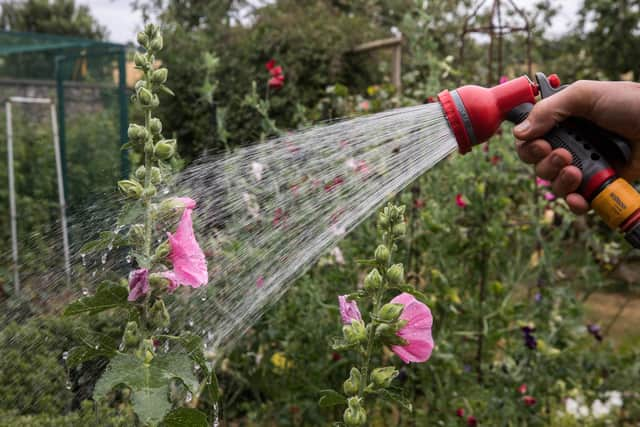UK heatwave: How you can help your plants survive scorching temperatures, according to experts
and live on Freeview channel 276
Experts at GardeningExpress.co.uk are giving their tips on how to help plants survive the blazing sun.
Our greenery can often be damaged in high temperatures, leaves can be ruined, and plants may even begin to wilt.
Advertisement
Hide AdAdvertisement
Hide AdThe best temperature for plants to flourish is around 24 degrees and anything too high can begin to affect the way the plant grows.


Chris Bonnett from Gardening Express said: “Obviously sun is good for our plants, but It’s important to take care of them in really high levels of heat.
“Intense sun can weaken plants, they may begin to wilt and their leaves can become damaged and of course it can be really frustrating for gardeners if this happens.
“There are a few small things you can do like moving the plants into shade and watering them at the right time to help protect them in a heatwave.”
How to help plants survive a heatwave:
Smart watering
Advertisement
Hide AdAdvertisement
Hide AdIt's best to water plants before or after the sun has hit its peak. Watering plants at the hottest point of the day won’t really benefit them. It needs to be done when it’s slightly cooler to give the plants the chance to really soak up the water.
A lot of people also think they need to give plants a lot more water in the heat, this isn’t necessarily true. If anything, you could be damaging your plants further by over watering them.
Watering once a day when the temperatures are a bit lower is good enough which takes us to the next point.
Avoid using fertiliser
A common mistake people make is thinking that plants need fertiliser in hot conditions to make them stronger.
Advertisement
Hide AdAdvertisement
Hide AdYou should actually avoid using fertiliser because when it is applied, it triggers the plant to grow, meaning more nutrients and water is needed. This will be hard to keep up with in hot conditions, the soil will be drying out quicker and your plant won’t really be able to absorb water properly in the heat.
Shade, shade, shade
Just like us, plants could do with a bit of shade when it gets too hot. If your plants are in pots, you can simply move them to a cooler area of the garden. If your plants are in a flower bed, there are ways you can create a bit of shade.
You can use anything from a white bedsheet to maybe an old net curtain. Just simply pin or hang it above the area of your plants to protect them from the sun.
Use mulch to lock in soil moisture
Soil dries out very quickly in high temperatures, so it’s a good idea to lock in the moisture once you’ve watered your plants. Mulch is a layer that you can put on top of your soil to act as a bit of a barrier between the sun and the soil to prevent it from drying out.
Pick the right pots
Advertisement
Hide AdAdvertisement
Hide AdPots can make a difference to how much sun can access plants. Black pots will attract the heat, which can damage your plants. Similarly, pots like terracotta that are left unsealed can lose moisture quickly which means that your plant is at risk of being dehydrated.
Aim to get pots that are sealed and light in colour in order to reflect the sun and give your plant the best environment in a heatwave.